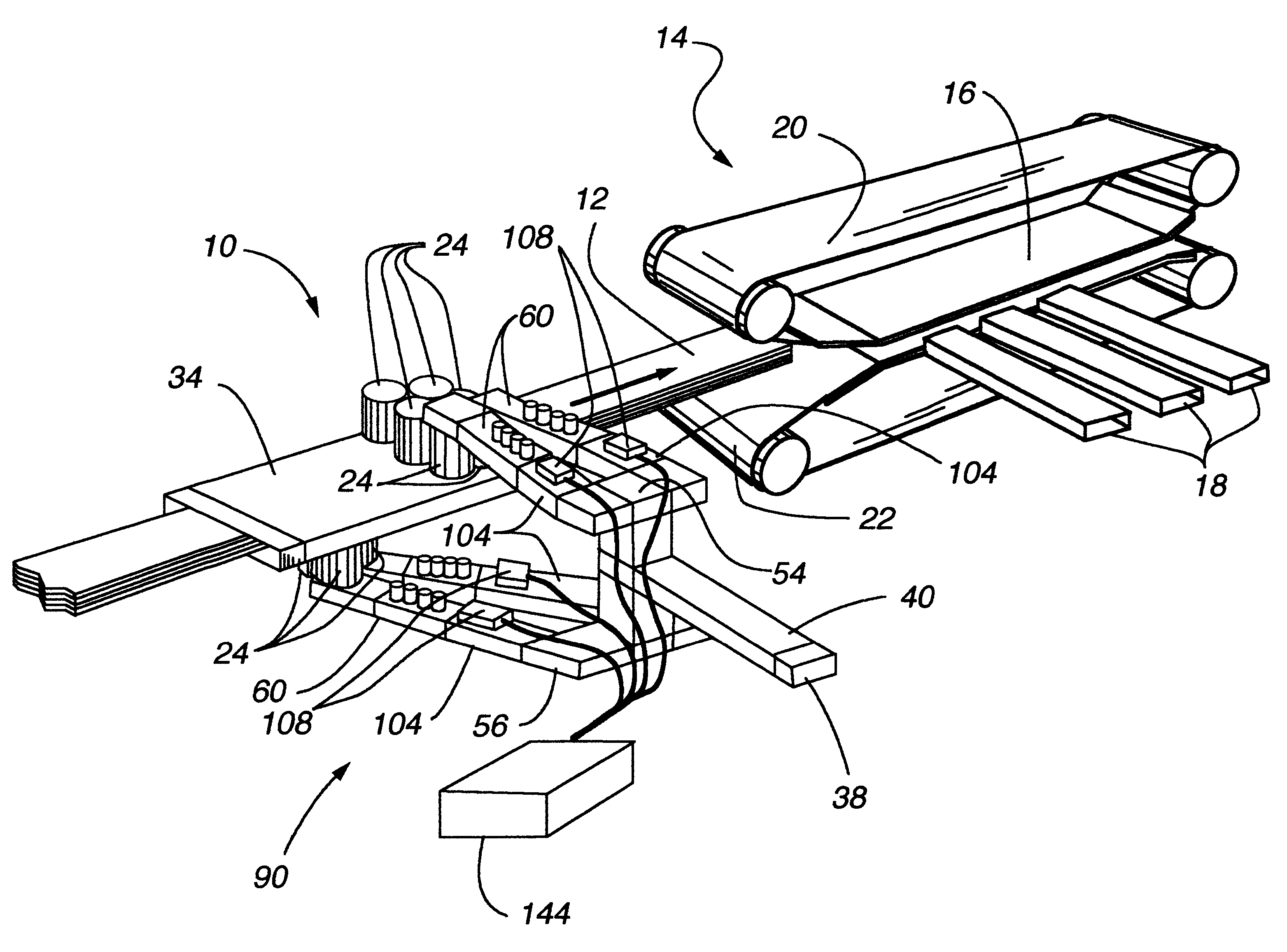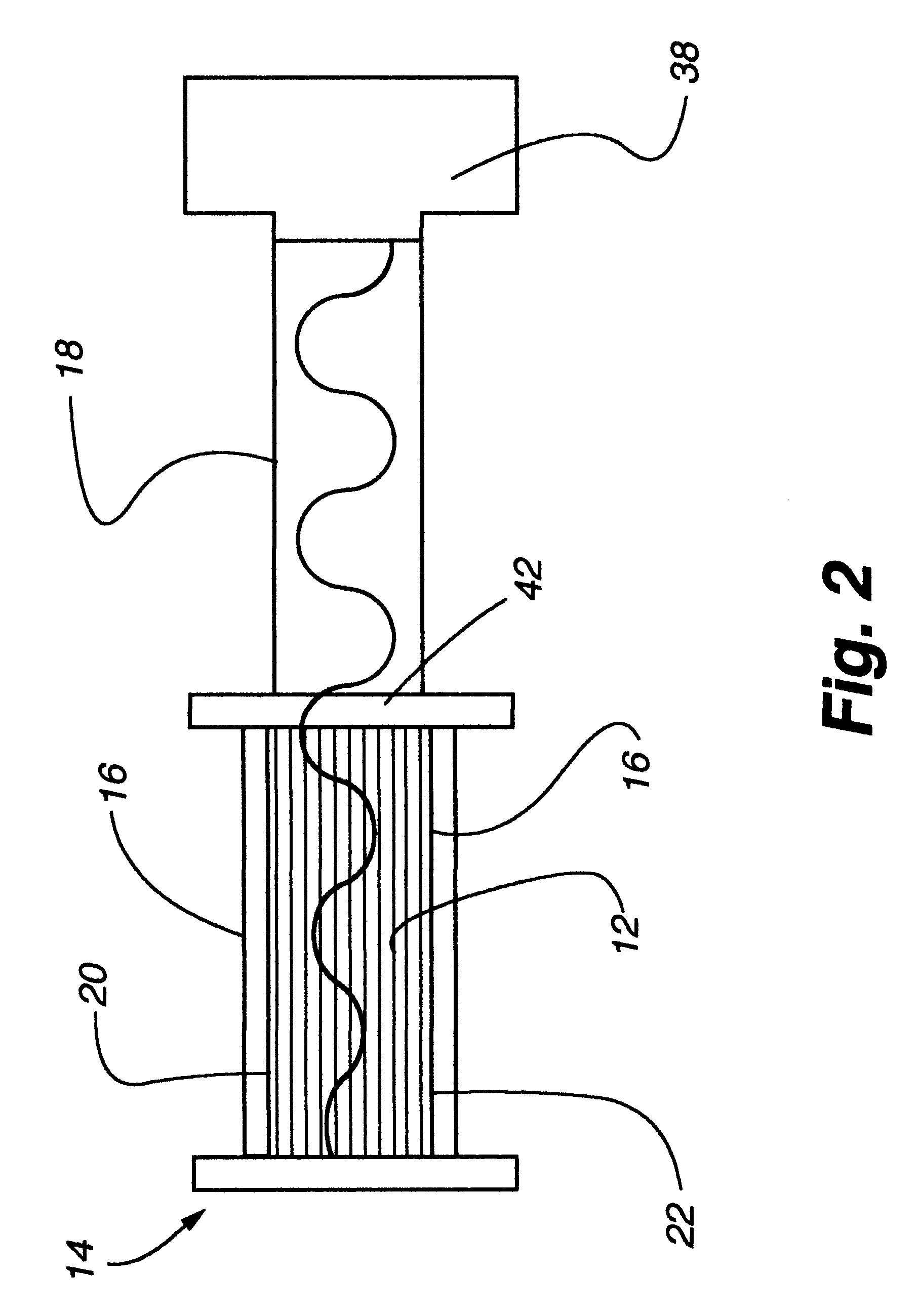Adjustable microwave field stop
- Summary
- Abstract
- Description
- Claims
- Application Information
AI Technical Summary
Benefits of technology
Problems solved by technology
Method used
Image
Examples
Embodiment Construction
Referring to FIGS. 1 through 12, the invention is shown to advantage. FIG. 1 shows a simplified view of a prior art system for gluing veneer strands together to form engineered wood using the application of microwave energy while the work piece is in a press 14. Although the work piece 12, which hereinafter will be referred to as a billet, could be of any thickness, in-press heating with microwave energy is best suited for thicker billets, to utilize the characteristic of microwaves to penetrate and heat the center of a billet. In the prior art, the billet 12 is composed of layers of wood strands and glue (also known as binding material or adhesive). The billet enters a press 14 which consists of an upper continuous belt 20 and a lower continuous belt 22. The two belts are brought together in the press platen 16, which applies pressure to the billet. As shown in FIG. 2, while the billet 12 is in the platen 16 of the press 14, microwave energy from a source 38 is directed into rectan...
PUM
 Login to View More
Login to View More Abstract
Description
Claims
Application Information
 Login to View More
Login to View More - R&D
- Intellectual Property
- Life Sciences
- Materials
- Tech Scout
- Unparalleled Data Quality
- Higher Quality Content
- 60% Fewer Hallucinations
Browse by: Latest US Patents, China's latest patents, Technical Efficacy Thesaurus, Application Domain, Technology Topic, Popular Technical Reports.
© 2025 PatSnap. All rights reserved.Legal|Privacy policy|Modern Slavery Act Transparency Statement|Sitemap|About US| Contact US: help@patsnap.com



